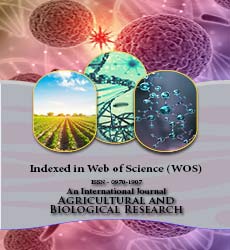Agricultural and Biological Research
RNI # 24/103/2012-R1
M.E. Haque, M.S Parvin
The fungus Rhizoctonia solani AG2-2IIIB causes root and crown rot on sugar beet, an important disease worldwide. This necrotrophic pathogen overwinters in crop residues and soil as sclerotia. This resting form germinate under favorable condition to infective hyphae that initiate the infections to sugar beet. Despite the global importance of this deadly soil-borne pathogen, the molecular basis of sclerotia development is poorly understood. Besides, R. solani AG2-2IIIB, hardly produces basidiospores; therefore, understanding the molecular mechanism of sclerotia formation is crucial for crop disease control. In the current investigation, RNA-seq (next generation sequencing, NGS) was persuaded via DNA nanoballs (DNB) to understand the transcriptome dynamics of mycelia and sclerotia. A total of 4185 differentially expressed genes (DEGs) and 6820 non- differentially expressed genes (DEGs) were identified between sclerotia and mycelia stage. Among the highly upregulated genes that encode enzymes or proteins were included cytochrome c oxidase, cytochrome c peroxidase, superoxide dismutase (SOD), cytochrome P450, oxidoreductase, signal peptidase complex, apoptosis-inducing factors, NADPH oxidase, chitinases, serine/threonine kinases, programmed cell death proteins, Transcription elongation factor 1-beta, subtilisin-like protease 8, poly-ubiquitin-A, glutathione peroxidase, phosphatidylserine decarboxylases, and hypothetical proteins identified in the transcriptome of sclerotia and mycelia. Moreover, gene ontology (GO) and kyoto encyclopedia of genes and genomes (KEGG) analyses showed that these DEGs were enriched in diverse categories, including oxidoreductase activity, carbohydrate metabolic process, and oxidation-reduction processes.
